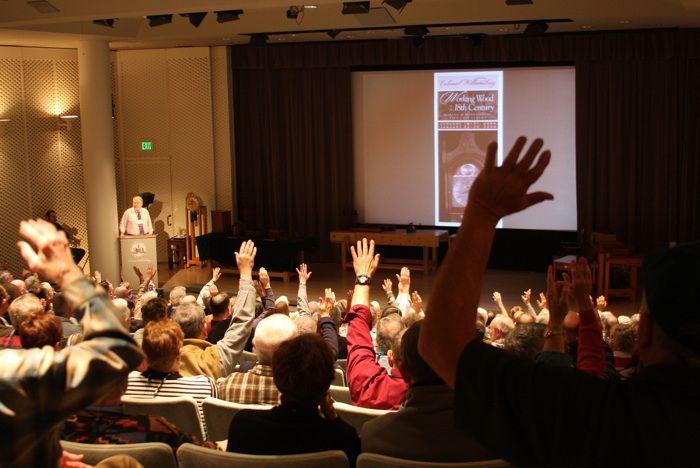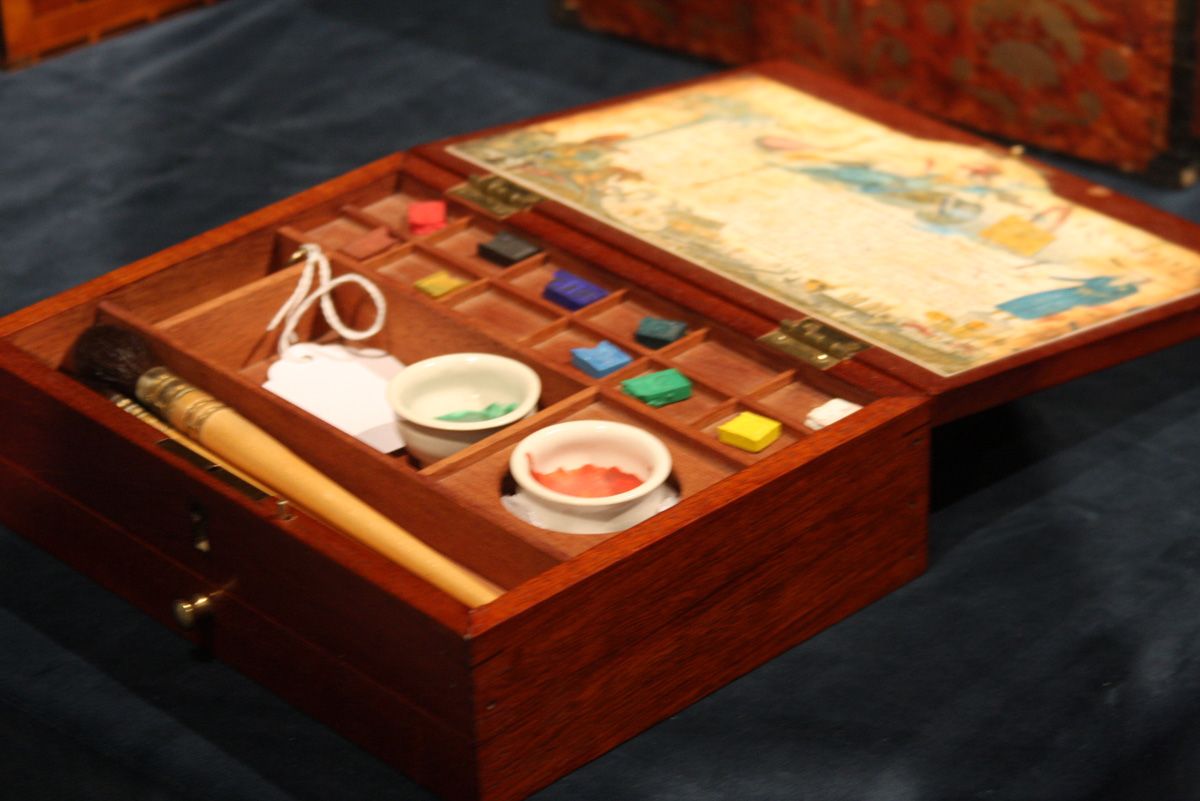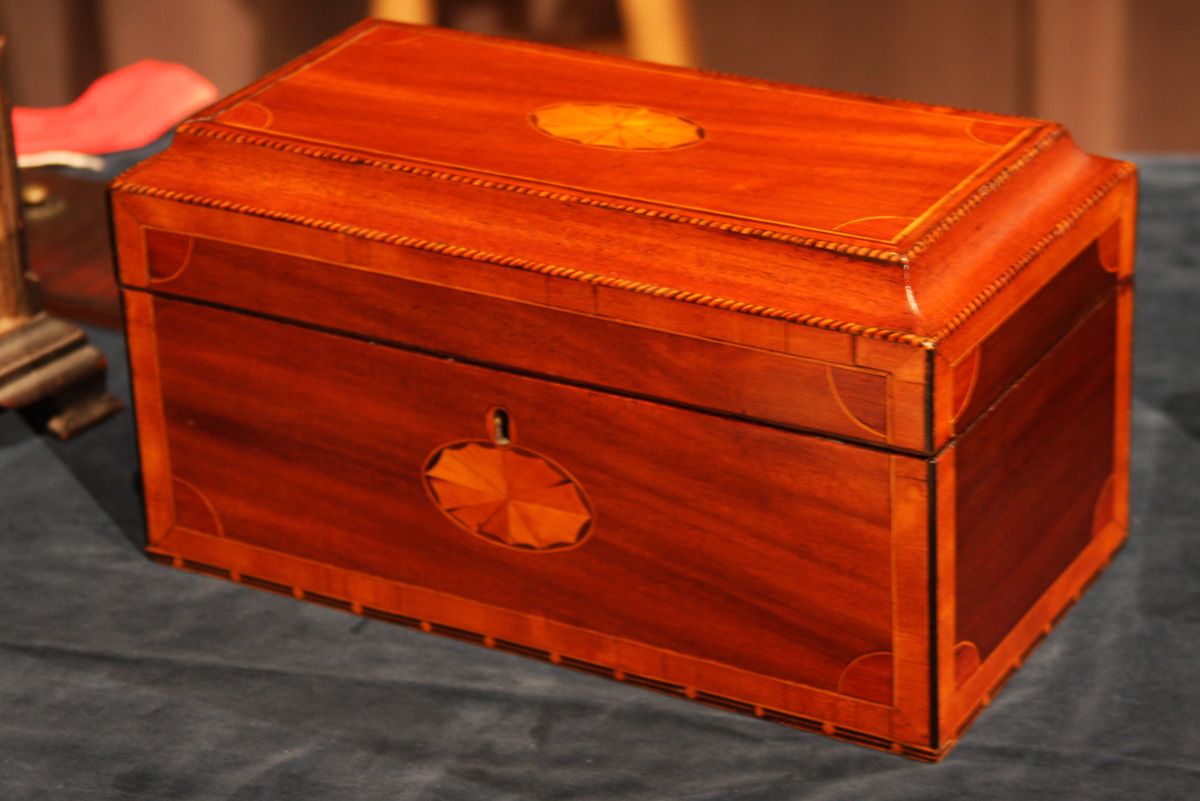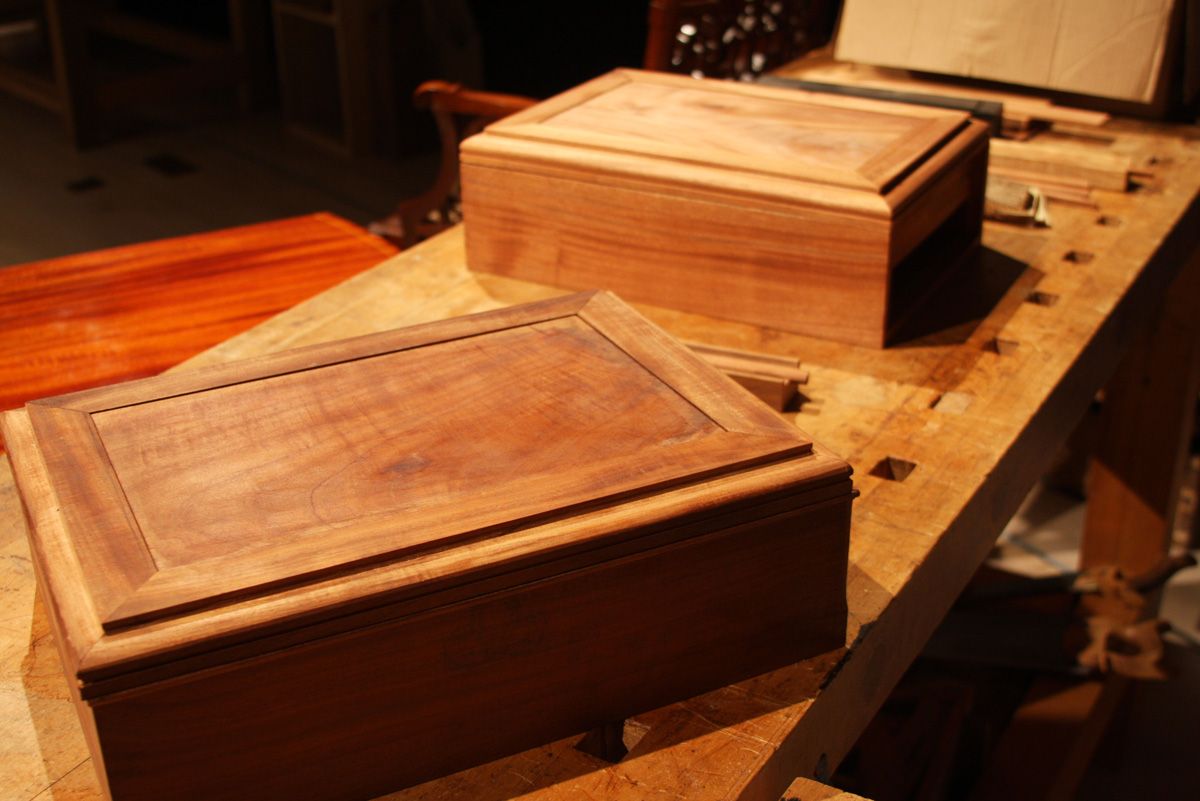
Jay Gaynor went through all 15 conference brochures, to see how many repeat attendees there were in the crowd. By the time he got to the fifth annual event, almost every hand was up.
Once again FWW is proud to be a part of Working Wood in the 18th Century. This is the 15th year for this top-notch gathering of period furniture lovers, at one of America’s most charming destinations, and FWW has been the show’s co-sponsor from the beginning.
This year’s focus on small items, like boxes, trays, and mantle clocks, has proven as popular with attendees as it is with FWW readers, all of whom appreciate smaller projects that don’t take as much time to complete, giving a wonderful opportunity to try out new techniques, and the two sessions were fuller than they have been in a number of years.
The show opened with Williamsburg’s furniture curator, Tara Gleason Chicirda, taking us on a historical tour of small items made in the 18th century. I hadn’t realized how important boxes were to earlier Americans, serving as storage and protection for almost anything small and valuable. Chicirda explained that antique prints are historians’ best tools for understanding how these items were used in daily life. The scenes she showed were full of these storage items. We saw bible boxes, tea caddies, candle boxes, document cabinets, and more in scenes of home life, and work scenes with boxes for tools of all kinds, from surgical instruments to woodworking tools, of course.
I especially liked the mens and womens dressing boxes, which contained everything they needed for daily hygiene and grooming, filled with razors, brushes, tooth powder, toothbrush, cosmetics, soap, etc., all kept in sensible but beautiful containers, each custom fitted into the overall box.
Period pieces come to life when you understand how they were used in daily life by real people. That’s what I like most about this conference. The real woodworking begins next, and fellow editor Matt Kenney and I will bring you a few tips from the show.
See all of the coverage from the Working Wood in the 18th Century conference at Colonial Williamsburg.



























Log in or create an account to post a comment.
Sign up Log in